

William Stopford
Every car discontinued in Australia in 2025
21 Hours Ago
Porsche's first attempt at an EV is good – but is it enough to swap people away from other EV brands?

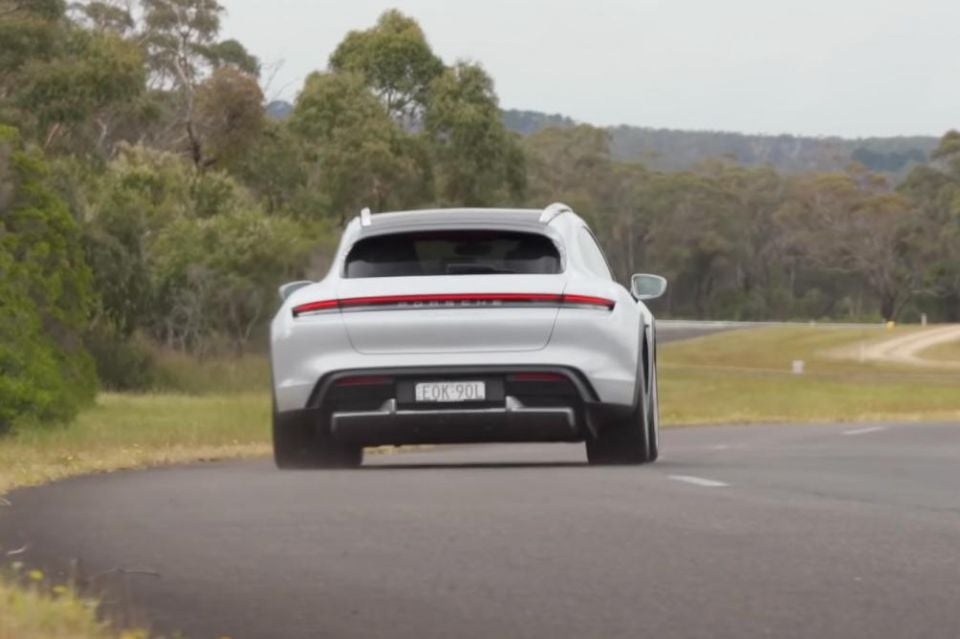

Quickly see how this car stacks up against its competition. Select any benchmark to see more details.
Where expert car reviews meet expert car buying – CarExpert gives you trusted advice, personalised service and real savings on your next new car.
Our team were pretty blown away when we realised the Porsche Taycan was the third best-selling EV in the country behind the Tesla Model 3 and MG ZS EV last year.
It shows you that premium EVs are here and being gobbled up by customers and conquests of ‘legacy’ internal-combustion brands. Porsche has a number of new EV and hybrid models coming, so it’s likely to only accelerate from here.
We’ve been hanging out to drive the 2022 Porsche Taycan Turbo Cross Turismo for a while now, and finally had the chance to get behind the wheel of this German missile.
The Taycan Cross Turismo range kicks off with the Taycan 4 Cross Turismo, which is priced from $176,600 before on-road costs.
Next rung up the ladder is the Taycan 4S Cross Turismo, which is priced from $205,300 before on-roads and finally there’s the model tested here, which is the Taycan Turbo Cross Turismo, which starts at $279,000 before on-roads.
There are 17 colours to pick from and most are free of charge. You can then tip money into colours to match and premium colours that vary in price.


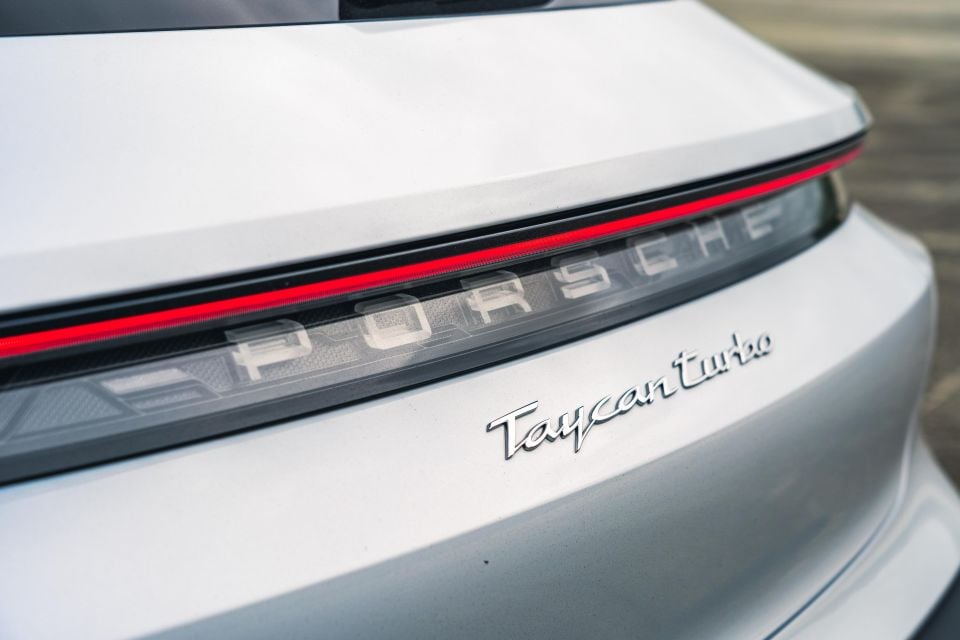
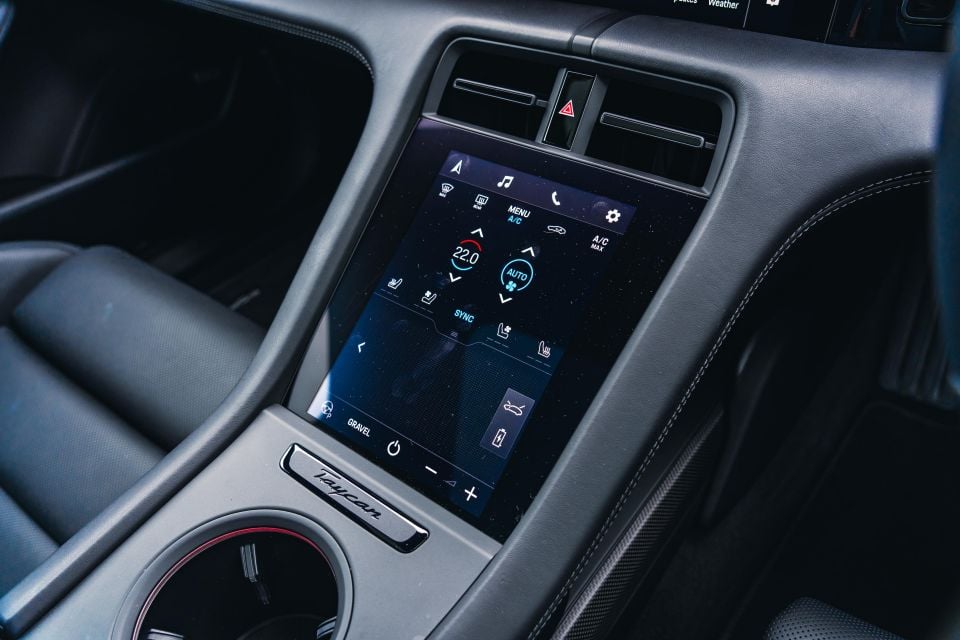
Buy your new car without the stress. It's fast, simple and completely free.

Great service from Travis and team, second time I have used this business would not hesitate to recommend them to anyone
Craig C.
Purchased a Ford Ranger in Sunshine Coast, QLD
CarExpert helped Craig save thousands on his Ford Ranger, now let us save you on your next new car.
Find a dealTaycan 4 Cross Turismo highlights:
Taycan 4S Cross Turismo adds:
Taycan Turbo Cross Turismo adds:
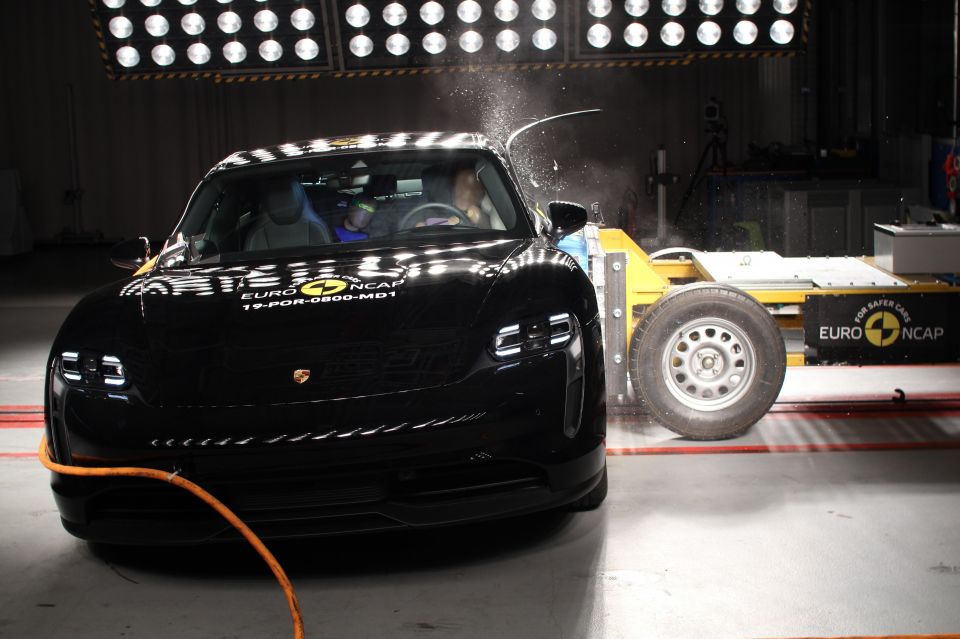
While the Porsche Taycan doesn’t have a safety rating from local ANCAP just yet, it managed five stars in crash testing conducted by Euro NCAP
The Taycan returned 85 per cent for adult occupant protection, 83 per cent for child occupant protection, 70 per cent for vulnerable road user protection, and 73 per cent for safety assist.
Autonomous emergency braking, lane-keep assist, and blind-spot monitoring are standard, along with adaptive cruise control.
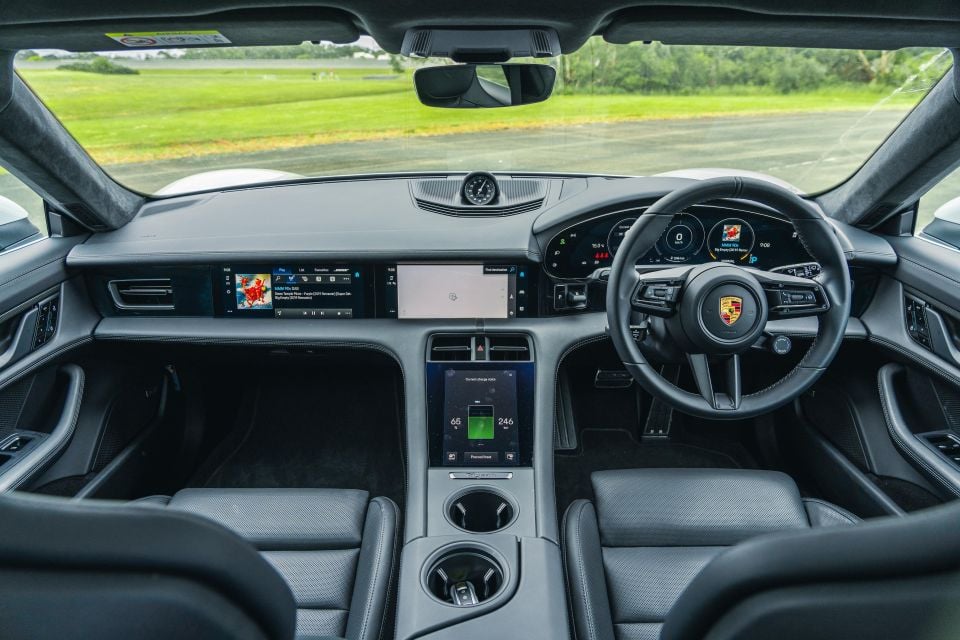
The Taycan is all about Porsche flexing its technology strength. Everything from the 800V charging platform through to the use of additional infotainment displays inside the cabin, Porsche wanted the Taycan to pave the way for future tech in the rest of its line-up.
So it’s little surprise that once you hop in there’s a swathe of displays to keep the driver and passengers busy.
The centre tunnel sits up high for easy access to the lower display, while the central infotainment screen sits above it and features only touch controls. In fact if you look around the cabin there are very few physical buttons or dials – most of the climate and infotainment controls are driven by a touchscreen of some description.
That includes the air vents – there’s no manual movement – they are entirely driven by the central display.


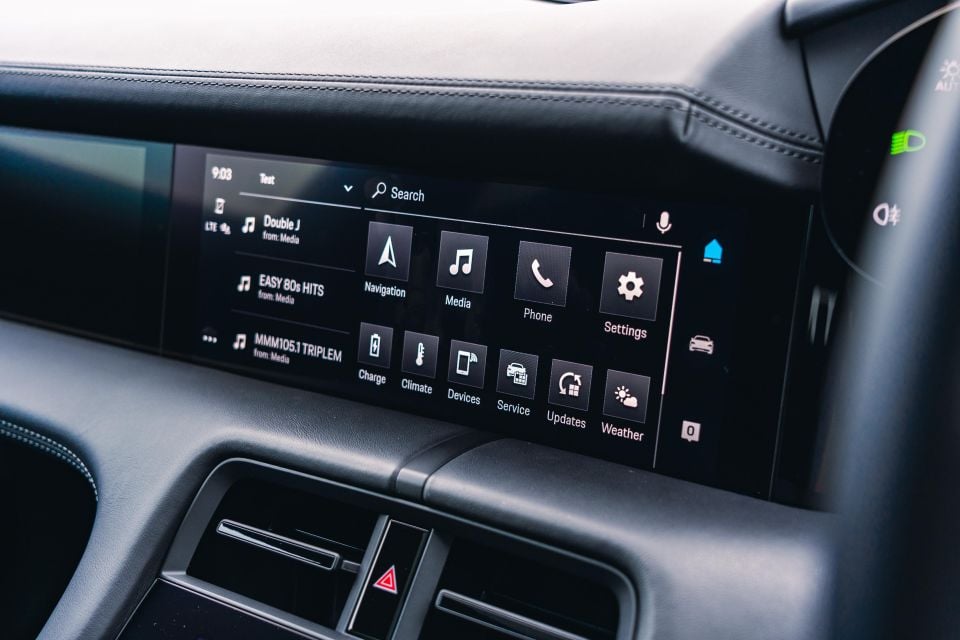
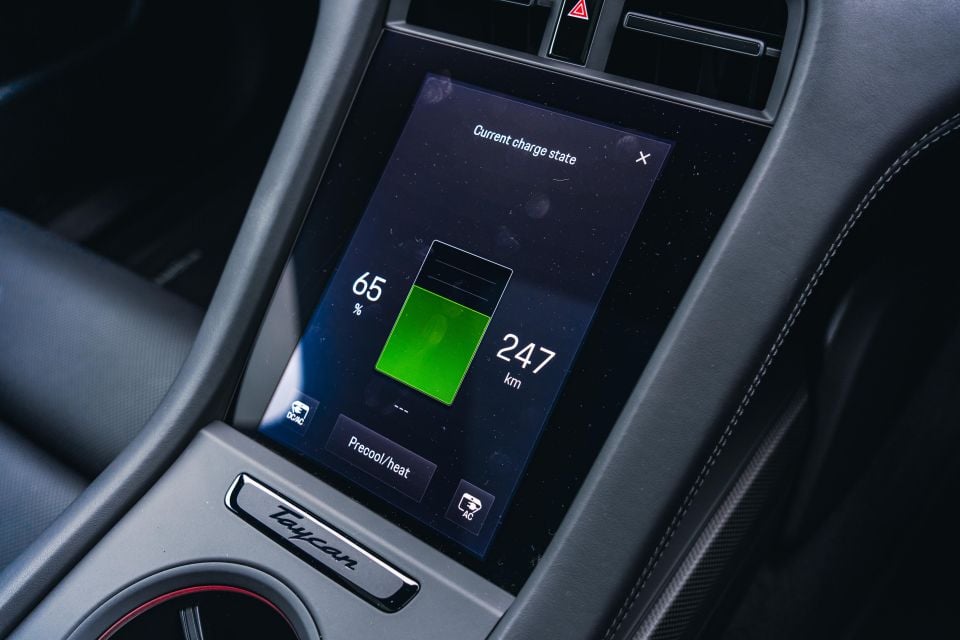
Before I get on to the tech, it’s worth pointing out the space inside the cabin. One of the great things about EVs is that batteries and motors can be concealed to create more space inside a cabin with superior storage.
Being a ‘wagon’, the Cross Turismo should benefit the most from that. But the Taycan (and by extension the Cross Turismo) is let down from a packaging point of view. The boot is pretty shallow and has limited storage height (total volume of 405 litres with second row in place and 1171 litres with second row folded), while the door sills are thick and offer reduced room to swing legs into the cabin.
There’s also little knee room in the second row. It feels pretty cramped and despite the big dimensions on the outside, it doesn’t translate to interior space.
So let’s put those negatives to the side for a moment and run through the rest of the interior.
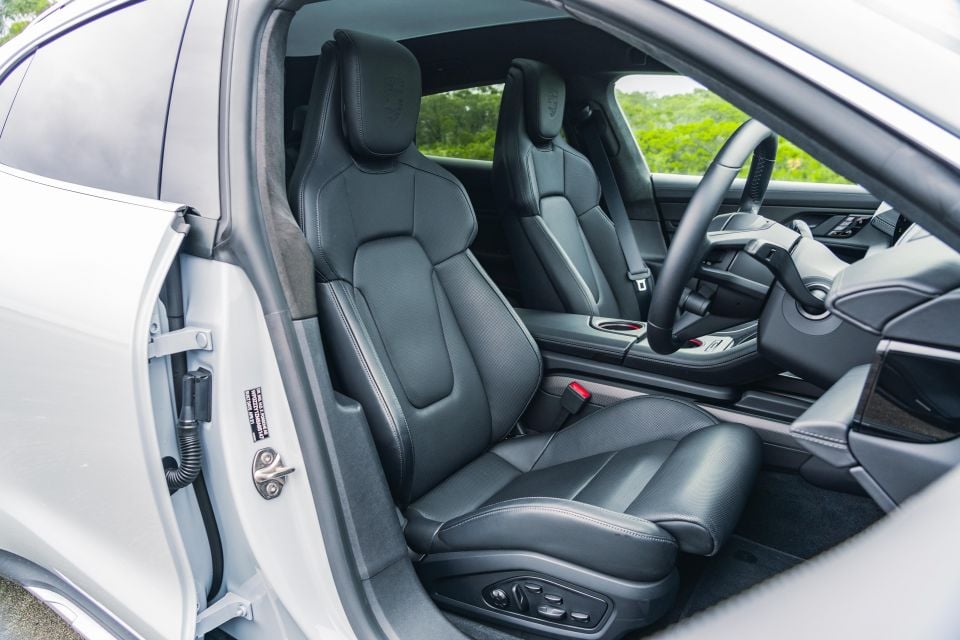
Getting into the driver’s seat feels akin to stepping into an SUV. The Cross Turismo sits 30mm higher than the regular Taycan and where people may find the normal Taycan tricky to slide into, the Cross Turismo feels much more accommodating. There’s an off-road appearance package that increases that height even further to make it easier again to get into the cabin.
Once you’re seated the interior shrinks around you with all of the critical controls within easy reach of the driver.
The central 10.9-inch infotainment screen is driven by touch and features wireless Apple CarPlay and wired Android Auto. Both great features, but it’s a little disappointing that you need to pay extra for wireless phone charging – you inevitably end up plugging up your phone anyway because of the extra battery drain courtesy of wireless smartphone mirroring.
It’s an easy to use infotainment system and features an embedded SIM for remote connectivity, allowing you to monitor charge and set charge rates, along with programming cabin temperatures and remotely locking/unlocking the vehicle.
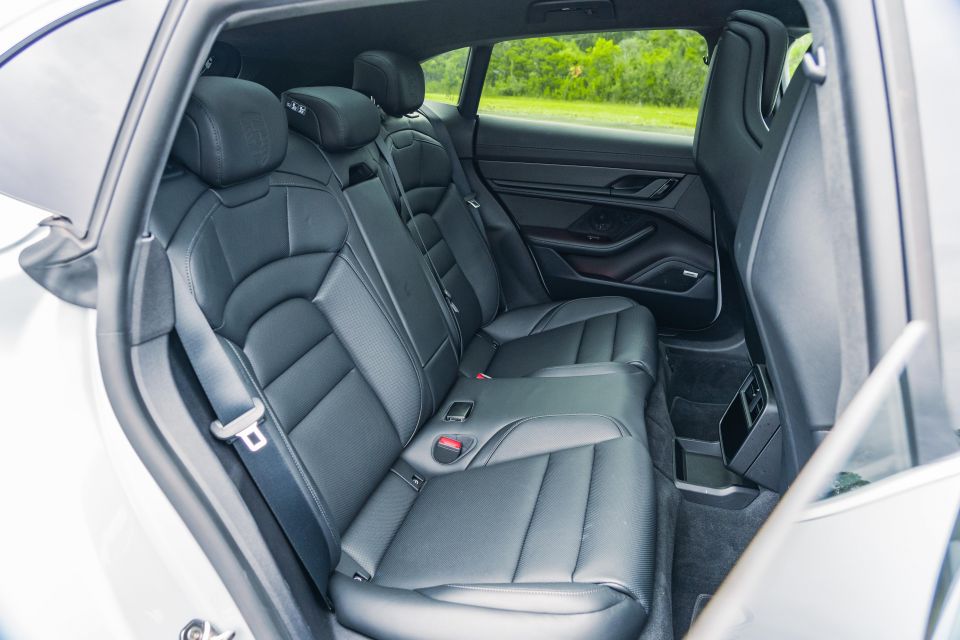

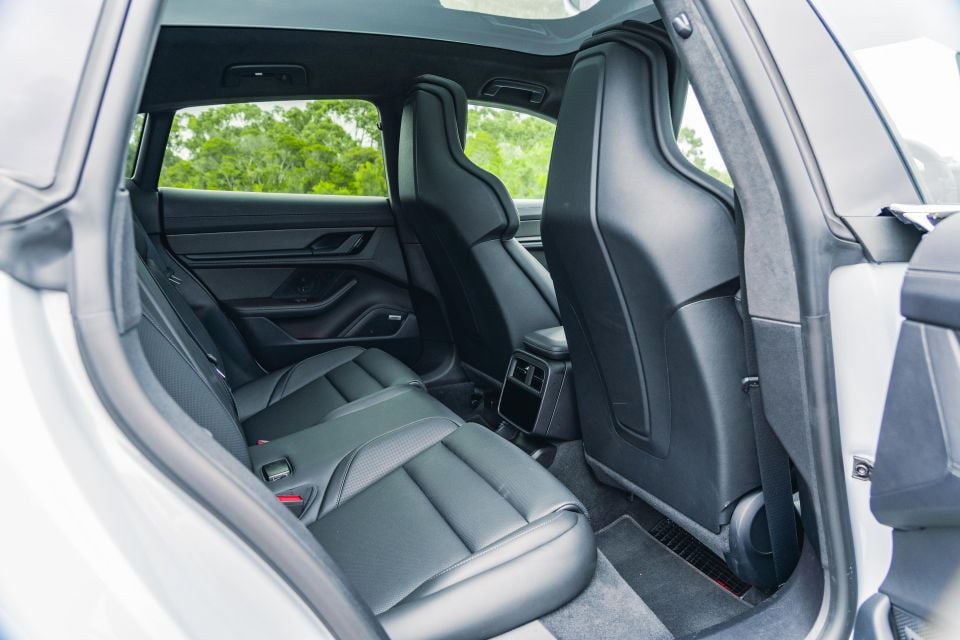

Our test vehicle was equipped with the optional second passenger display, which adds certain infotainment functionality ahead of the front passenger. It looks cool, but ultimately it’s a bit of a gimmick. The main infotainment screen is within reach of the front passenger and the added screen will ultimately end up draining more battery as opposed to drastically changing the user experience.
Storage in the front row is a little limited. You have two cup holders and a centre console, but I couldn’t really find a slot for something like my sunglasses case. It wouldn’t fit in the cup holders or centre console and it had to be crammed in for the door to close on the glovebox.
Ahead of the driver is an incredible curved display that measures almost 17 inches in width. Looking at it from top down you can clearly see the curve in the middle and it’s probably one of the best integrations of a driver display we’ve seen before. Very impressive.
It includes shortcut buttons on either flank of the display for things like the headlights and traction control. The display itself can also be customised in a number of ways to adjust what’s seen ahead of the driver. It’s a great integration and hopefully it’ll be rolled out to other Porsche models in the future.
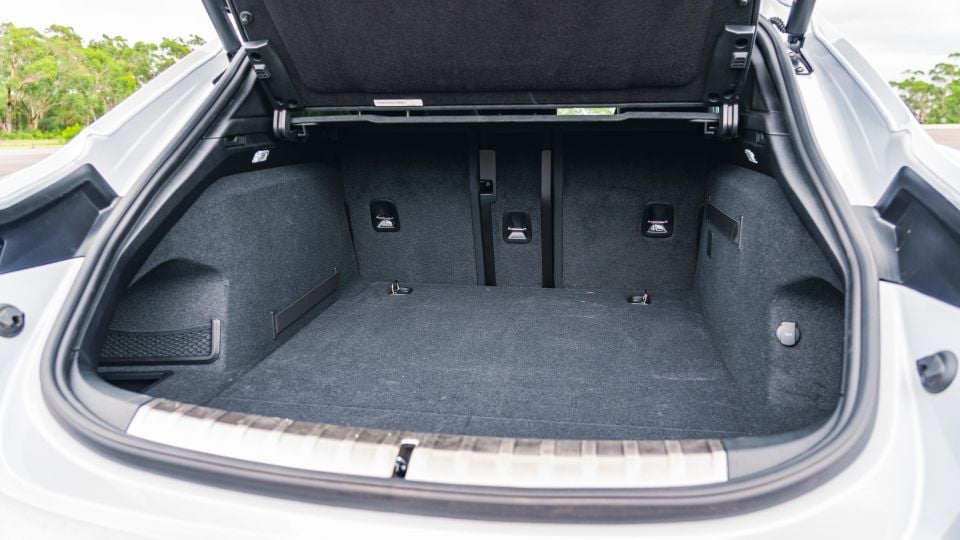
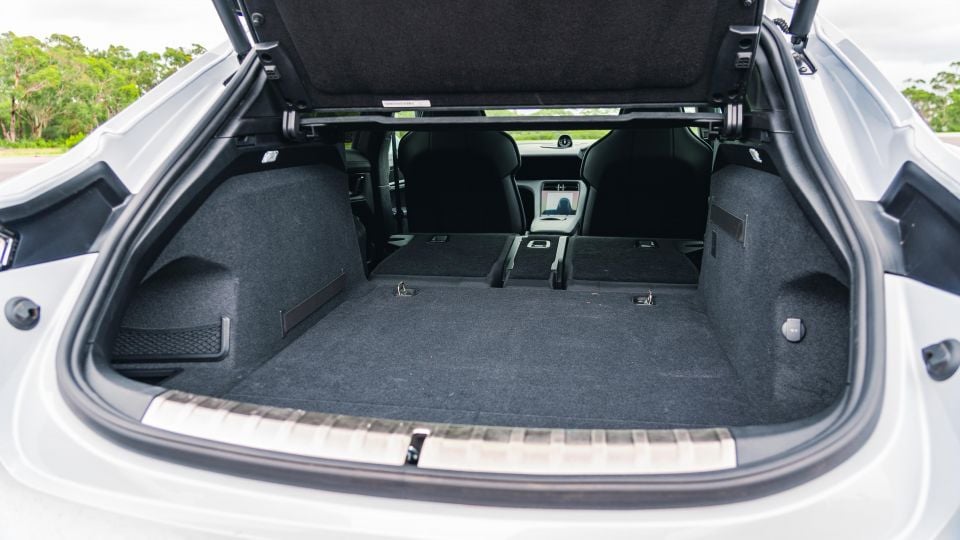
The second row is effectively a four-seat configuration due to the height of the middle seat. While you could technically seat somebody there, it wouldn’t be overly comfortable and the rise of the centre section would have their head getting close to the roof.
Turbo models feature heated seats for the two outer seats in the second row. All of the climate and seat heating controls are driven by a screen between the two outboard seats.
If you’re carrying kids, there are two ISOFIX points on the outboard seats, plus top-tether points to keep everybody secure.
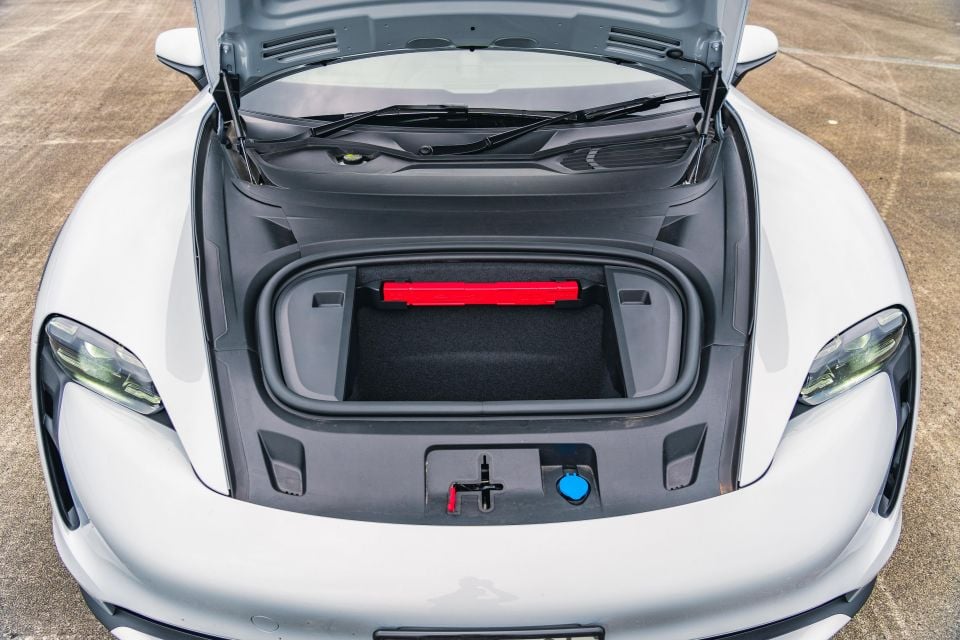
The Porsche Taycan Cross Turismo features a dual-motor, all-electric powertrain and a 93.4kWh battery pack.
In the new base Taycan 4 it makes 350kW of power and 500Nm of torque, good for a claimed range of 437km.
In the 4S, it generates 420kW of power and a maximum of 650Nm of torque.
The Turbo produces 500kW of power and 850Nm of torque. Claimed range is up to 452km on the WLTP test cycle for the 4S and Turbo.
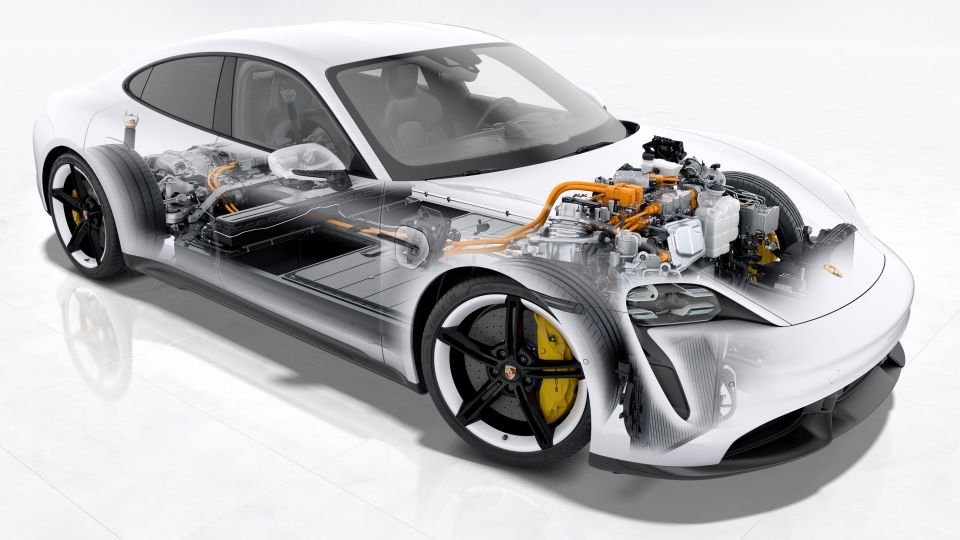
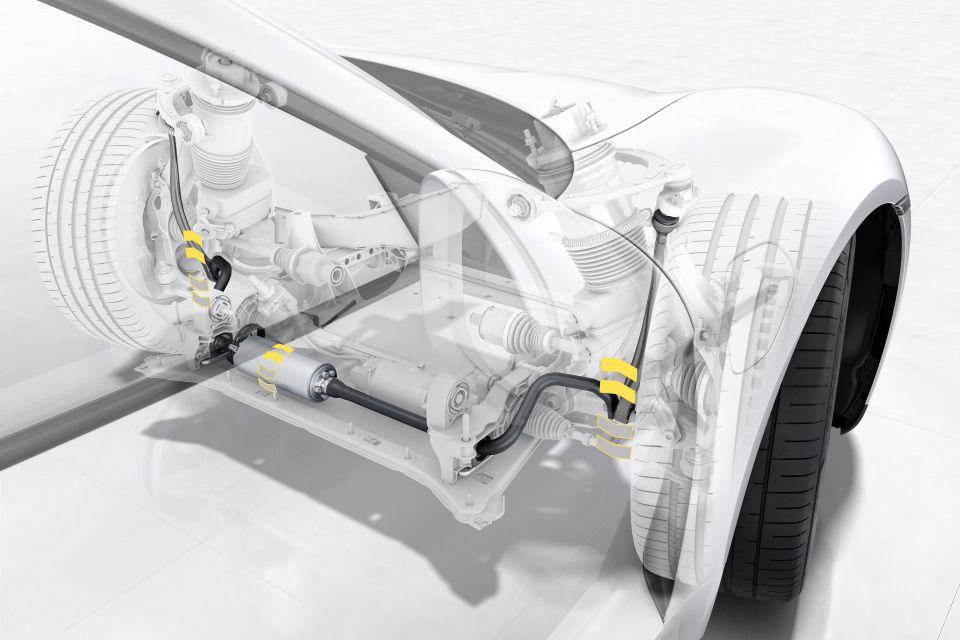
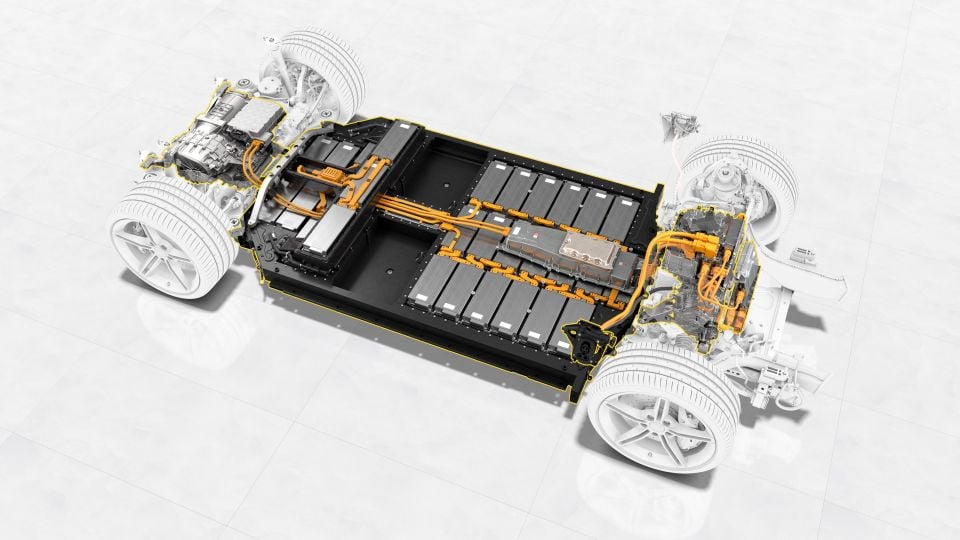
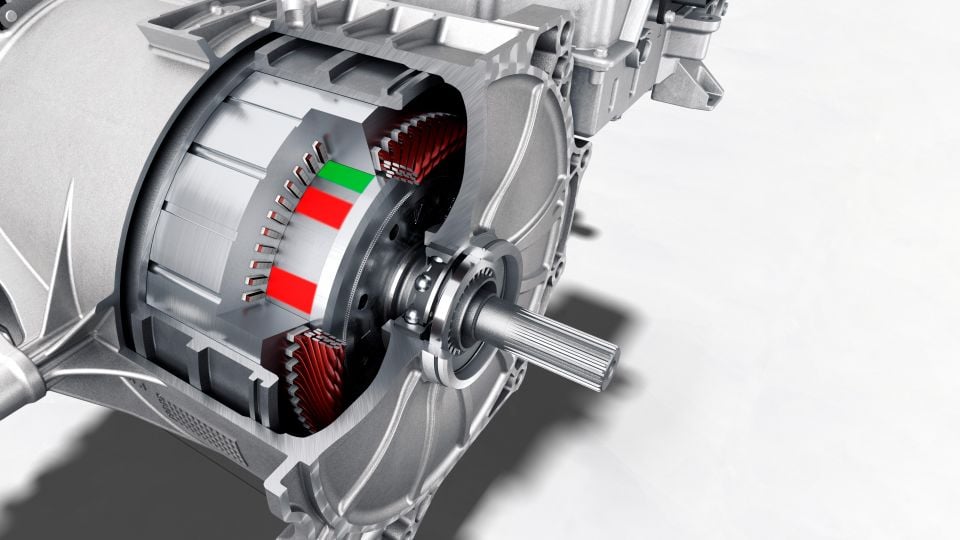
On the charging front the Taycan platform supports 800V charging, along with a mix of single- and three-phase AC charging. In its regular trim it can achieve up to 11kW of charging on AC, but an optional three-phase 22kW charger can be selected to improve charge capacity.
DC charging occurs at 800V and peaks at 262kW, with an average charge rate of 197kW over a typical charge cycle. It’s a pretty impressive figure when compared to other fast-charge capable EVs on the market.
Porsche has also fitted the Taycan with charge ports on both sides of the vehicle on the front quarter panel. One side caters for AC and DC charging, while the other side will only do AC charging.
Like other vehicles with chargers located further down the sides, it can be a little tricky to reach the charge port on chargers with shorter DC cable runs.
How much juice does it use? The official claim is 28.7kWh/100km and on test we achieved a little over 25kWh/100km.
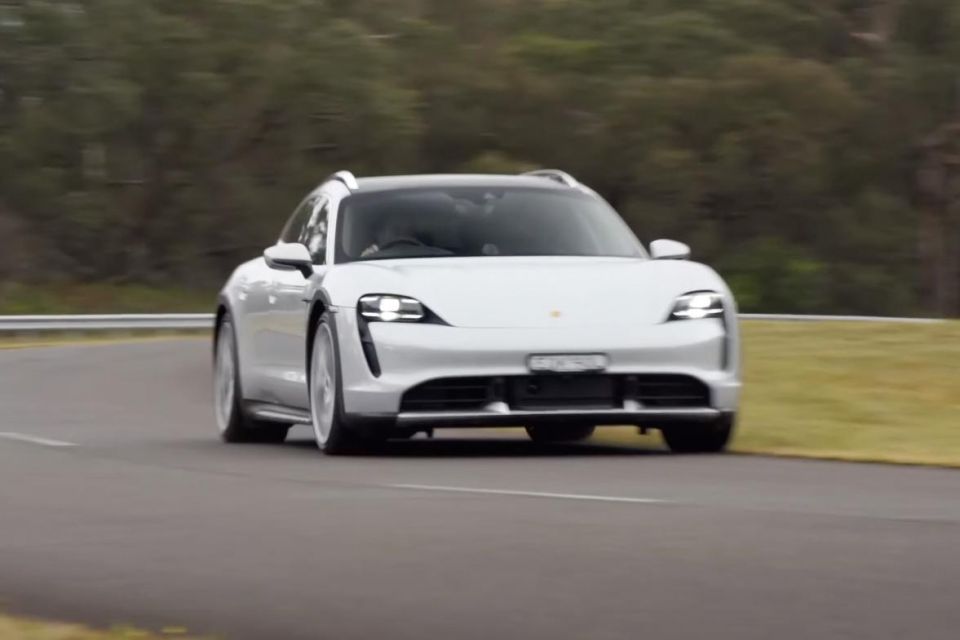
I’ve driven a stack of EVs before, but the Taycan is the first I’ve driven that feels virtually identical (minus the engine rumble) to its internal-combustion counterparts to drive around at low speeds.
The Panamera has the same low-speed characteristics of the Taycan, which is a good thing, and makes it feel like a not too distant departure from driving a similarly ballistic Porsche vehicle.
Unlike almost all other EVs on the market, the Taycan uses a two-speed transmission. While you don’t notice it doing anything most of the time, you will realise it’s there if you kick the throttle hard at lower speeds. It’s almost like a momentary lapse in torque delivery while it shuffles to the next gear.
It’s setup in this way to cater for crazy fast acceleration from a standing start, but also crazy fast acceleration at higher speeds. Don’t all EVs without a two-speed gearbox do this already? Not quite.

Jump in a quick Tesla and punch the throttle from 100km/h and it feels more like a light breeze on the face in comparison to the punch in the face you experience when mashing the throttle from a standing start.
Porsche wanted to offer rapid acceleration at higher speeds, while still allowing fast acceleration at lower speeds. This two-speed gearbox achieves that. Changing gears in a variable band between 20km/h and 100km/h, the seamless shift isn’t noticed unless you punch the throttle hard when it has already shifted between the gears.
So you have adequate performance at low speeds and impressive performance at higher speeds without losing that level of efficiency.
And it definitely translates to that when you get stuck into it. The acceleration from lower speeds is impressive – as it is with most EVs – but it really kicks it up a notch as the pace increases. Depending on the drive mode you’re in, the car will adjust the severity at which it delivers torque.
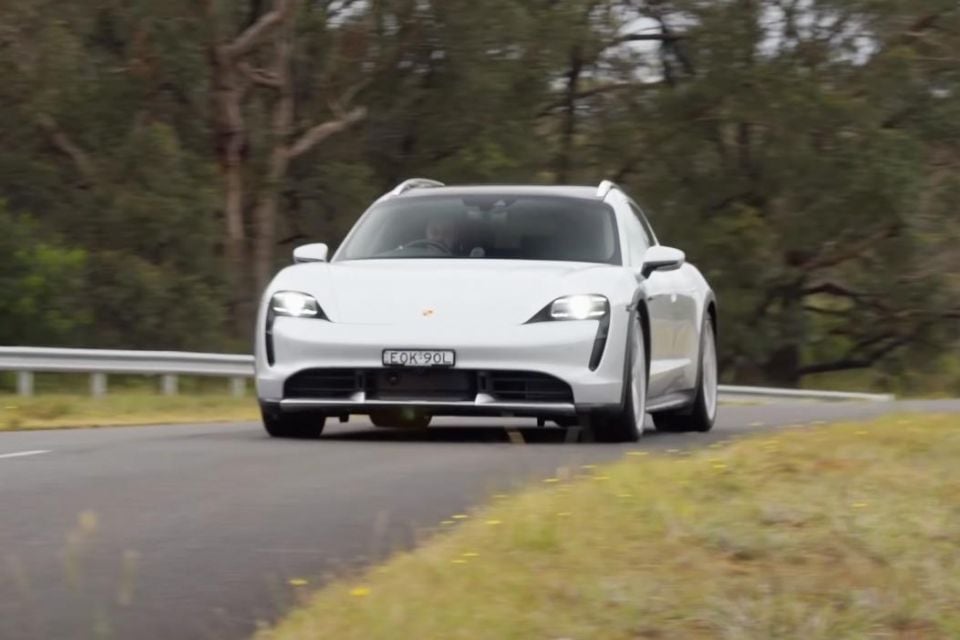
The sharper the setting, the harder it’ll push you back into the seat.
Porsche has gone with a very different braking strategy to most other EVs on the market. Where most EVs will have a progressive regenerative braking setup that will slow the car down or even bring it to a complete stop, Porsche does all of this through the brake pedal.
By operating the brake pedal you first force the car into a regen braking zone and it’ll only use mechanical brakes at the very limit of the cars regeneration abilities. And those abilities are pretty awesome. It can claw back just under 270kW of power under maximum regeneration – compared to something like 80kW in a Tesla Model 3.
That means you’re rarely using the mechanical brakes – they mechanical brakes are big as well, coming in at 415mm with 10-piston calipers and a ceramic coating on the front axle. From a performance sense it’s a logical way to do things, but I guess I’ve become accustomed to an active regen mode that will bring the car to a complete stop, something you can’t program the Taycan to do.
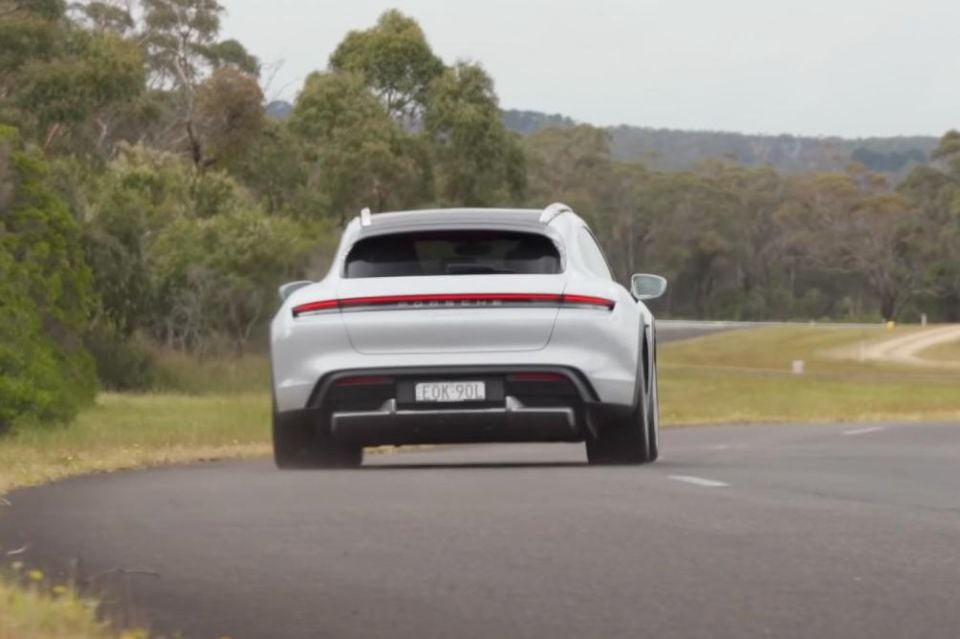
Where expert car reviews meet expert car buying – CarExpert gives you trusted advice, personalised service and real savings on your next new car.
For a wagon, the Turbo Cross Turismo handles like a vehicle half its size. It’s big – it weighs in at just over 2200kg tare – but it doesn’t feel all that big behind the wheel. You can confidently stay on the throttle out of a corner and the electronics do a great job of evenly distributing torque between the axles and sides of the car.
The big 245/285mm rubber helps keep it planted to the road with a low centre of gravity courtesy of the heavy and low-set battery pack. Steering feel is on point and the body sits flat thanks to adaptive damping, height-adjustable suspension that lowers in Sport mode and is bolstered a 48V active anti-roll suspension setup.
You can carry serious pace through a corner and know that it will remain glued to the blacktop. It’s also heaps of fun with all the safety aids switched off. It’ll variably send torque to the rear axle to create an engaging driving experience like other Porsche products.
In and around the city Porsche has managed to make the ride supremely comfortable, despite it riding on the monster 21-inch alloy wheels fitted to our test car. It handles corrugations and speed humps aptly and makes getting in and around the city pretty straightforward.
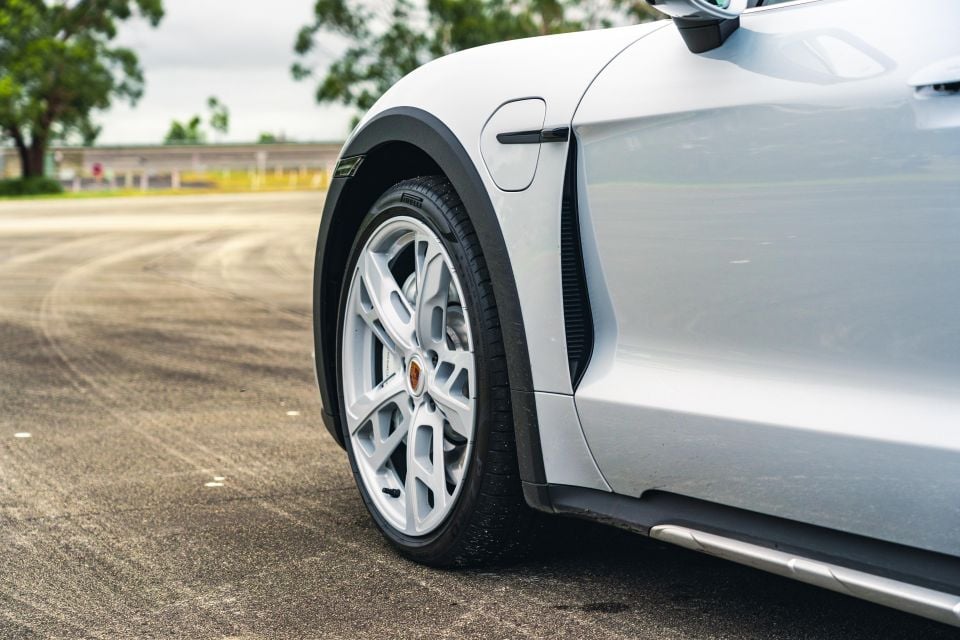
The Porsche Taycan Cross Turismo is backed by a three-year, unlimited-kilometre warranty. It’s a pretty poor warranty coverage given most of the premium market has moved to offer greater than three years of warranty coverage.
Maintenance is required every 12 months or 15,000km, whichever comes first.
Buyers can prepay for three, four or five years of servicing, which comes in at $2995, $4495 and $5495 respectively. The servicing costs are strangely high given how little is done during a service on an electric vehicle.

There’s absolutely no denying that the Porsche Taycan isn’t just another EV. This looks, feels and drives like a combustion-powered Porsche. It’s comfortable around town, but crazy quick when you really want to get stuck into it.
While you could view the lack of efficiency as a downside, I suppose you could say it’s like any other internal-combustion Porsche that will always skew to performance over economy – especially in high-end Turbo trims.
So, should you buy one? If you’re a dyed in the wool Porsche driver, this car is a no brainer. If you’re a customer of another brand wanting to make a switch to an EV but don’t want to be just another Tesla driver, it’s genuinely worth considering.
I’m excited for the next generation of the Taycan, where Porsche will show the world how it can adapt to learnings from its first proper EV platform. It’s exciting times ahead for Porsche and EVs in general.
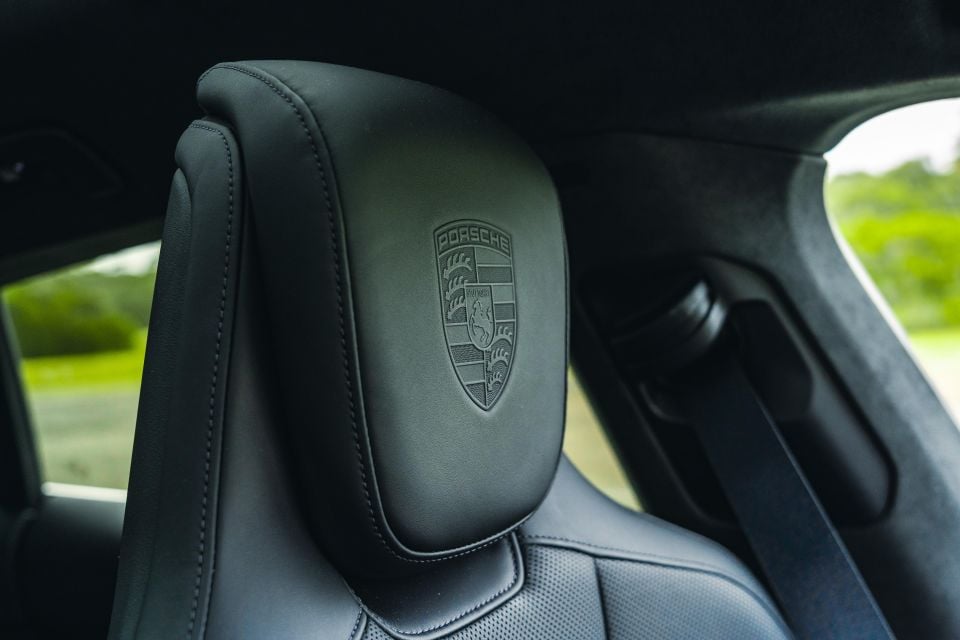
Click the images for the full gallery
Where expert car reviews meet expert car buying – CarExpert gives you trusted advice, personalised service and real savings on your next new car.
Paul Maric is a CarExpert co-founder and YouTube host, combining engineering expertise with two decades in automotive journalism.


William Stopford
21 Hours Ago


CarExpert.com.au
4 Days Ago


Damion Smy
6 Days Ago


Damion Smy
9 Days Ago


Max Davies
11 Days Ago
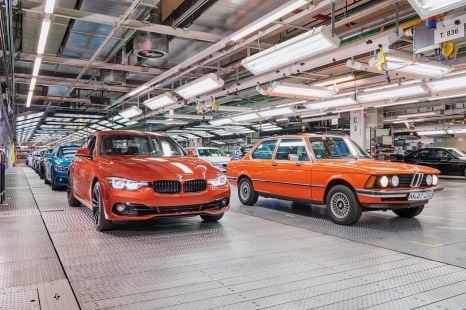

Ben Zachariah
13 Days Ago